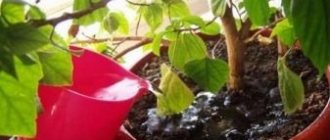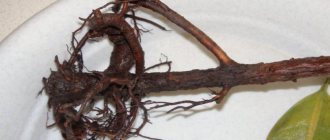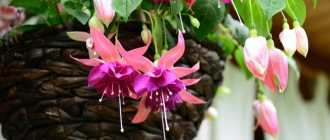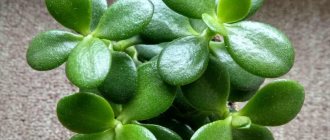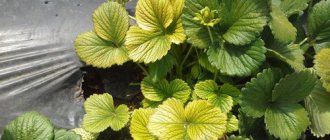Today you can buy beautiful and delicate roses in pots in almost any flower shop. However, the Queen of Flowers is capricious and often after purchase, once in home conditions, the rose leaves begin to turn yellow and fall off. What to do, how to save a flower? First of all, you need to identify the cause of your pet’s illness and eliminate it. In addition, roses require special growing and care conditions, which is described in detail in our article: “How to care for an indoor rose?”
Reason #3: lack of light
A rose growing on a north window will suffer from a lack of lighting, which will affect its appearance. The leaves will begin to turn pale and yellow, the plant will not bloom.
You will be interested to know: Why cucumbers are bitter and what to do to make the fruits tasty
What to do
Roses need good lighting. In winter they are placed in the brightest windows, and in summer they can be grown on balconies or in the garden. In spring and summer, when the sun is active, do not forget to shade the plant. In winter, in a room with insufficient light, additional lighting with phytolamps or fluorescent lamps may be needed.
Attention! Rose leaves may turn yellow due to sunburn. Therefore, when choosing a place for flowers, be careful. In the garden or on the balcony, place the pot with the plant in light partial shade.
Nutrient deficiency
Rose bushes that are kept in the same pot for several years without fertilizing suffer from a lack of nutrients.
Iron
Iron is one of the main participants in the formation of chlorophyll; its deficiency is always manifested by a sharp yellowing of the bush. Iron deficiency rarely occurs due to a lack of the element in the soil. More often, the microelement takes a form that is inaccessible to plants.
Signs of iron deficiency: paleness and, over time, yellowing of the leaves between the veins. The process always begins with young leaves, which eventually fall off. Older leaves stay green longer but also turn yellow over time.
Reasons for the unavailability of iron for plants:
- excess phosphorus, manganese, zinc;
- high concentration of soluble salts in the substrate;
- excessive soil density, which interferes with aeration and retains water;
- shift in soil pH towards alkaline.
Without correcting these disorders, it is useless to treat rose chlorosis. To do this, it is easier to transplant the rose into a new substrate.
To eliminate iron deficiency in the plant itself, iron chelate is used. Fertilizer (5 g) is diluted in warm water (8 l), the diseased bush is sprayed with a spray bottle until completely wet. In case of severe chlorosis, fertilizer is also applied at the root after the soil has been spilled with water. The bush is treated 4-6 times at intervals of 10-14 days.
A lack of other elements can also lead to yellowing of the rose.
| Lack of element | Signs | Treatment |
| Nitrogen | Yellowing of the lower leaves, lightening of the color of flowers, thin and twisted stems | Spraying with 0.5% urea solution |
| Potassium | Yellowing, drying of the edges of old leaves, small buds | Fertilizing with potassium sulfate at the root; aqueous solution 15 g/10 l |
| Magnesium | The appearance of yellowish spots between the veins, greenish edges of the leaf; Over time, the affected areas die off | Fertilizing with magnesium sulfate; spray solution 15 g/10 l of water; solution for applying under the root 30 g/10 l of water |
| Manganese | Yellowing of old leaf blades between the veins | Spraying with 0.2% manganese sulfate solution |
It is very difficult to find out which mineral element a plant lacks at home. This requires laboratory tests. Therefore, if there is no experience in combining various substances, it is better to use complex fertilizers with o.
Important! To avoid a lack of nutrients, home roses are fed all year round. Phosphorus and potassium are added in autumn, nitrogen and potassium are added in spring. Microelements (boron, iron, manganese, etc.) are fertilized by spraying the bushes 1-2 times a year. Be sure to adhere to the recommended norm; an overfed plant may also turn yellow. If this happens, stop feeding for 2-3 months.
Reason #4: improper watering
Often, beginning gardeners try very hard to care for their plants and water their roses almost every day. Frequent waterlogging of the soil leads to rotting of the roots, yellowing of the leaves and even death of the flower. Plants need to be watered only after the top layer of soil has dried to a depth of one centimeter (if the rosette is small), and to a depth of 2-3 cm if the plant grows in a large pot.
However, overdrying the soil is no better than waterlogging. Do not let the soil in the pot dry out completely and crack. This will also be the cause of yellow, dry and falling leaves.
What to do
- If, due to waterlogging of the soil, the foliage turns yellow, falls off, and the roots rot, the rose needs an urgent transplant with a change of soil. During transplantation, rotten roots are cut off and sprinkled with crushed activated carbon. The flower is transplanted into new soil and watered as needed.
- Dry soil cannot be completely moistened by watering. The rose pot should be placed in a bowl of water for half an hour so that the soil is completely saturated.
Why does a rose turn yellow?
Yellowing and falling of rose leaves occurs due to a disruption in the formation of chlorophyll. This disease is called "chlorosis". Chlorophyll is a green pigment that absorbs light energy necessary for the formation of organic substances (carbohydrates, starch, etc.) during photosynthesis.
A lack of organic substances leads to metabolic disorders in the plant, it weakens, stops growing and may die without treatment.
Causes of rose chlorosis:
- improper conditions of detention;
- root damage;
- nutritional deficiency;
- pests;
- various infections.
First you need to find out the type of chlorosis: infectious or non-infectious. After infection, the leaf blades turn yellow completely along with the veins. With non-infectious chlorosis, the leaf veins remain greenish.
Even if the disease is caused by physiological reasons, weakening the plant increases the risk of various infections. Therefore, premature yellowing of the bush cannot be ignored.
Note! The dormant period of the rose lasts from November to February. At this time, the bushes turn yellow and shed old leaves. This is a natural phenomenon - new leaves will grow in the spring, flowering will be abundant.
Reason #6: Pests
Dry air is the main cause of spider mites appearing on plants. This pest is very fond of the tender leaves of roses, from which it sucks the juice. As a result, rose leaves turn yellow, dry out and fall off.
If the leaves begin to turn yellow, inspect them from the back. Spider mites appear as very small moving dots. You can see a cobweb between the leaves. Pests multiply quickly and can destroy the plant completely.
In addition to spider mites, thrips and rose leafhopper can also infect roses.
What to do
The bush is washed in the shower. If there are few pests, try folk remedies. Severely affected plants are treated with special insecticidal agents.
Read more about spider mite control here.
Inherent diseases and pests
If the care and soil are chosen correctly, the leaves of an indoor rose may still turn yellow. An inexperienced flower lover may confuse aging with illness. As they age, the lower leaves begin to die off and their number decreases.
The appearance of black spots is a signal of a disease; traditional methods rarely cope with it . Fungicides are a real salvation from this scourge. It must be diluted according to the instructions and sprayed from a spray bottle for several days. If the cause of the blackening was caused by bacteria, this treatment will certainly help.
Causes of yellow rose leaves
Why do rose leaves fall off in summer - what to do
Roses can turn yellow for reasons beyond the control of the grower. Cloudy weather for long days provokes the formation of a yellow leaf if the crop is initially planted in a shaded place on heavy soils. The bush begins to turn yellow from the lower tier, where less light reaches. The owner, if possible, removes disturbing objects or growths, but sometimes this is not enough.
Read more about other reasons.
Rose pests
Diseases and pests
Choose a bright, well-ventilated place for the rose garden, but without drafts. When the air stagnates, infectious diseases develop:
- black spot. Appears towards the end of the season. First, a brown spot with a yellow border forms on the leaf blade. Then the disease takes over the entire leaf. Over the course of a week, the activity of the fungal pathogen takes on large-scale proportions. Spores of the parasitic microorganism overwinter under the bush, so in the spring the ground is treated with fungicides topaz and ridomil gold;
- powdery mildew. Viable fungal spores remain active in the soil for decades. An infected plant is not capable of photosynthesis, so the leaves turn yellow and the buds become smaller. Treat with phytosporin-M;
- jaundice. First the veins lighten, then the entire plate. The virus takes starch from the plant, leaves and flowers become deformed. Chemical preparations have not yet been created, so carrier weeds are destroyed;
- plant bronze virus. The first signs appear at the tip of the leaves, then the spots surround chlorotic areas. After 2-3 days, the stems and petioles of the rose are affected. Gardeners use fungicides.
Yellowness can also be caused by pests. The most common:
- spider mite The small arachnid attacks indoor and garden varieties of roses. Colonies of several hundred individuals settle on the underside of the leaf and form a thin web. The flower weakens, the plant turns yellow;
- aphid. The sucking insect does not attack strong bushes, so flower growers first take care of the health of roses. Aphids live where there are ants. Their colonies are destroyed with boric acid and sugar. Marigolds and lavender are planted next to roses, since the pest cannot tolerate them;
- pink scale insect. Belongs to the category of aphids. It affects greenhouse plants and ornamental crops in open ground. Add 5-6 drops of kerosene or machine oil to the soap solution and spray the bushes. Chemical preparations do not kill scale insects.
Note! Weevils, leafhoppers and cutworms also live in the rose garden and feed on plant juices. As a result, gardeners observe yellow leaves falling off.
Watering roses requires moderate
Improper care
Roses are capricious plants. They respond to proper care with magnificent flowering. Violations in agricultural technology lead to yellowing and falling leaves:
- soil condition. The crop is planted on light soils with medium acidity, which allow moisture and air to pass through well. Ash and sand are scattered under a garden rose bush. Dig shallowly to mix the ingredients with the soil. In indoor pots, the soil is completely changed when the plants are replanted. Make sure that the composition always contains turf soil, peat bog, and charcoal;
- drying out of the soil. If the ground under the bush has dried out by 3-5 cm, watering is required. Moisturize early in the morning or evening. At midday, droplets of water will act as lenses; leaves and branches may be scorched, causing burns;
- excess moisture. Danger in the development of fungal diseases;
- incorrect feeding schedule. A lack of organic and mineral fertilizers or their excess has a detrimental effect on the health of the flower. It will be semaphored by the yellowed above-ground part.
Important! Outdoor flowers need to be trimmed properly. Dirty tools and untreated cutting areas become a breeding ground for harmful fauna and, as a result, yellowing of the foliage.
Lack of micro- and macroelements plays an important role in flower development
Macronutrient deficiencies
Macronutrients are chemical substances of inorganic origin. They are found in plant cells, but they get there from outside and are not synthesized by the body. In total there are 11 of them in nature.
The most important macroelements for roses, without which the leaves turn yellow:
- nitrogen. When the plant lacks this element, the leaf turns completely pale. Reddish spots may appear. Young shoots stop growing and turn yellow. Urea and ammonium nitrate are added under the bush. Mullein and chicken droppings are rich in nitrogen;
- potassium. The lack of an element gives the effect of an edge burn - the leaf along the edge turns brown and dries out. The middle remains green. The petioles weaken and the plant sheds its leaves prematurely. To prevent this, fertilize with potassium humate and potassium magnesium. Wood ash carries its share of the missing element.
Note! Macroelements are applied not only to the soil; foliar feeding is very effective. Leaves and branches absorb solutions and quickly recover. In this case, the composition of the soil does not change.
Lack of microelements
Microelements are needed by plants in minute quantities - less than one thousandth of the green mass, but they are also not produced by the body. Without them, the metabolic process does not take place, so the rose needs them.
The most significant:
- magnesium. A deficiency is recognized by the central part of the leaf, which turns yellowish. The edges may still remain green. Magnesium sulfate saves;
- iron. The deficiency becomes the most common cause of yellow leaf. The veins do not lose color. Replenish the deficiency with ferovite. Iron sulfate also works, but it is still more of a fungicide than a microfertilizer;
- manganese. When there is not enough of this substance, yellowness covers the lower parts of the plant. Plantings must be fed with manganese sulfate.
For your information! Manganese and iron are deficient in alkaline soils. Soil acidity is reduced with coniferous litter or peat.
Micro- and macroelements are replenished with complex fertilizers such as humate.
Spotting on roses
Resuscitation of roses after exposure to adverse conditions
If the roses have turned yellow due to poor conditions, the first step is to eliminate the impact of a negative factor. Bushes damaged due to lack of moisture should be watered with warm water; if the soil becomes waterlogged, stop irrigation for a week or take care of a removable waterproof canopy to protect from precipitation. In case of significant fluctuations in daily temperatures, it is necessary to provide shelter for the bushes at night. If the reaction of roses is associated with a lack of light, only transplanting to another location will help.
“Resuscitation” measures will help eliminate the consequences of stress suffered by plants:
- Water the bushes with Zircon (1 ampoule per bucket). You can add an ampoule of Cytovit to the solution or dissolve 1 g of Kornevin. You need to pour 1.5-2 liters of product under the bush; immediately before the procedure, you should water the plant with clean water.
- After 3 days, it is recommended to treat the bush with Epin (8-10 drops per 1 liter).
- 14 days after watering with Zircon, it is necessary to feed with potassium humate.
Advice from experienced gardeners! If yellowing of the bushes is accompanied by severe inhibition of shoot growth, the bushes should be sprayed with a solution of succinic acid (tablet per liter of water) or the drug “NV-101” (drop per liter of water). It is recommended to alternate these products with a solution of vitamin B2 (200 ml ampoule of water), spraying once a week.
If the roots are damaged (in case of stagnation of water or prolonged drying out of the soil), you need to give the plants an unscheduled fertilizing with phosphorus - this will help the rose grow new roots faster. In other cases, it is enough to feed weakened plants with potassium to increase immunity. A foliar application method is recommended for rapid absorption of nutrition - in this case, dilute 15 g of superphosphate or 10 g of potassium sulfate per bucket of water. You can combine both elements in one feeding using potassium monophosphate (10 g per 10 liters).
Providing basic conditions for growing roses will help prevent yellowing of leaves:
- Planting in well-lit areas. The bush should be in direct sunlight for at least 5-6 hours a day.
- Ensuring the removal of moisture from the soil. When grown in low-lying areas, the bushes need to be “raised” above the ground line, that is, planted on an artificial embankment created from soil. In heavy soils, sand should be added to loosen before planting.
- Optimal watering regime. Rose bushes need to be watered once a week, giving each one 10 liters of water. If regular maintenance is not possible, mulching the tree trunk circle with peat or freshly cut grass will help retain moisture. In hot summers, irrigation is carried out 2 times every 7 days. The water should be warm.
How to properly care for roses
Garden roses are plants that are extremely demanding of proper and high-quality care. To prevent their leaves from turning yellow, you should follow some nuances regarding planting, fertilizing, pruning and covering. In summer, roses are pruned depending on their variety, and in such a way that it is convenient to cover.
Roses should be planted in the fall - you need to choose the timing so that the bush, which has begun to produce young shoots, does not die from the onset of frost. A plant planted too early simply will not have time to establish itself in the soil, and as a result will not be able to survive the winter. After planting, garden roses need to be pruned: remove all weak branches, and leave five to six buds on strong shoots.
Garden roses should be closed immediately after the first frost. Removal of the protective layer is carried out in the spring, in a leisurely manner. As soon as the last layer of snow melts, the southern side is opened slightly, and then, every few days, a third of the material from which the shelter is made is removed. The protection should be removed completely by the time the awakening of the kidneys becomes noticeable.
Roses do not require excessive watering - the liquid is applied relative to the general moisture of the soil in which the bush sits. In spring, the soil is still wet and does not require additional watering. In summer, roses are watered two to three times a month, depending on how dry and warm the weather is. In the autumn season, watering garden roses is reduced or even stopped altogether. Before the bush is covered for the winter, it should be watered using a large amount of moisture.
What to do if your houseplant drops its leaves?
There are several reasons why this whimsical plant sheds its leaves and dries up:
- Physiological aging is when a flower, at the final stage of its life, begins to shed its leaves and buds.
- Seasonality - when an indoor flower sheds its leaves in the fall so that new ones grow in the spring.
- Violation of the light regime - lack or excess of sunlight.
- A change in weather or a change in the microclimate of the house - a change in air temperature and humidity level in the room, the appearance of a draft or the start of heating devices in the house affect the condition of the rose.
- Violation of the irrigation regime - lack or excess of moisture in the soil.
- Presence of pests – parasites dangerous to flowers, especially spider mites, can destroy a plant in a matter of days.
- Unsuitable soil - a lack or excess of nutrients in the soil leads to the fact that the flower begins to hurt and wither.
- The rose is damaged by pathogenic microflora - the flower begins to rot or black spots appear on it.
If the leaves of a rose begin to fall, it is recommended:
- Carefully examine the flower . If the leaves turn yellow and fall off on one side, this may indicate an excess of sunlight. In such a situation, it is necessary to provide the rose with diffused light.
- Check the soil in the pot . If the pot has cracked, dry soil, you need to start watering it regularly. For irrigation, use pre-settled water at room temperature.
- Remember the last time the soil of the rose was changed . If it was more than a year ago, then it is advisable to urgently start feeding the plant. But you should carefully study the instructions and strictly follow them so as not to overfeed.
- Check leaves and stems . If pests are detected, it is recommended not to delay the start of treatment. In this case, it is necessary: Isolate the rose from other plants.
- Use a sterile blade to trim off all affected areas.
- Treat with parasite repellent according to instructions.
If a rose drops all its leaves in the shortest possible time in spring or summer, this means that:
- The flower is located in a room with very dry air. What to do in a situation if the plant has dropped all its leaves:
- Move it to another room or install a humidifier nearby.
- Water the flower regularly and do not allow the soil to dry out.
- The flower was infected with a dangerous disease. In this situation, the action plan is as follows:
- Trim off all affected areas of the flower and remaining buds with a sterile blade.
- Treat the plant with special means.
A rose that has dropped all its leaves will take a long time to recover, so it is recommended to be patient and wait, while observing the light and watering regime.
Insufficient or excessive feeding
The soil must contain sufficient nutrients for normal flower growth. For flowering and growth, regular feeding is necessary. Insufficient calcium and iron content in the soil affects the leaves. This is another reason why Chinese rose leaves turn yellow. An indoor rose is most likely lacking iron and calcium if yellowness appears directly between the veins.
In particular, a lack of nitrogen can occur during active flowering . This may also be the reason why the rose drops its leaves. What to do? Be sure to fertilize the plant a week after transplantation, as well as every three weeks. It is better to purchase a complex fertilizer intended specifically for roses.
But excessive oversaturation of soil minerals can harm the flower. Powdery mildew is a signal that you should wait a bit with fertilizers. The disease looks like a white coating on the leaves. Treating surviving leaves and shoots with a fungicide will help; diseased shoots should be removed.
Traditional methods to promote good rose growth:
- Infuse 170 grams of garlic in 1 liter of water for 5 days. Then add a solution to the water for irrigation in the proportion of 1 teaspoon per 1 liter;
- dry mustard powder;
- ash.
When purchasing a flower, be sure to check its variety. There are deciduous types of roses that, in preparation for winter, shed their leaves and retire from October to February. There is another problem that the plant may encounter - a virus. If a virus has infected your pet, then it is unlikely that you will be able to help the flower survive. A cure for this problem has not yet been found. If all care recommendations are followed, this magnificent fragrant flower will delight the eye of its owner for a very long time!
Why does a rose dry in the garden? 4 Mulching and watering a rose bush
- 1
Cover the area with mulch around the bush with a layer of 2.5–5 centimeters. Buy organic or non-organic mulch online or at a home or gardening store. Spread the mulch around the rose bush in one even layer. Leave 2.5 centimeters of empty space around the base of the bush.
- Do not spread mulch around the crown of the bush.
- Mulch will allow the soil to retain more moisture to feed the roots and prevent weed growth.
- Organic mulch includes wood chips, straw, freshly cut grass and leaves.
- Inorganic mulches include gravel, rocks and glass.
- Replace or add more organic mulch once a year in early summer.
2
Spread cardboard mulch if you're having trouble controlling weeds. This mulch will help get rid of weeds. Spread it on the selected area of soil in a dense layer. It will cover the weed seeds from the sun's rays and thereby prevent them from germinating.
3
Water your rose bush when the soil is dry. It is necessary to thoroughly moisten the soil if it does not rain in your area every week or the rose bush acts as a houseplant in a pot. The top 5–8 centimeters of soil should be moist. You can test the soil by running your finger through the top layer. Add water if it is dry.
- Roses will dry out if they are not watered regularly.
4
Water your rose bush before sunrise and after sunset. If you do this in the middle of the day, when it is sunny outside, then they will remain stained from dried drops of water. In addition, the water will evaporate quickly and will not sufficiently moisten the soil.


